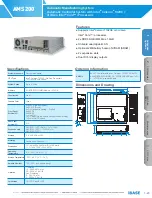
The appliance is fitted with a double baffle plate with
permanent vent holes to ensure secondary
combustion.
Advice
Never burn wood with an open door.
Regularly burn wood with intense roaring fires.
If you frequently have low intensity fires, tar
and creosote may be deposited in the chimney.
Tar and creosote are highly combustible
substances. Thicker layers of these
substances might catch fire when the
temperature in the chimney increases
suddenly and steeply. Therefore it is
necessary for the fire to regularly burn very
intensely, so that layers of tar and creosote
disappear.
Low intensity fires also cause tar deposits on
the stove window and door.
When the outside temperature is not very low,
it is better to burn wood intensely for a few
hours instead of having a low intensity fire for a
long period of time.
Control the air supply with the secondary air inlet.
The secondary air inlet not only supplies air to
the fire but to the glass as well, so that it does
not get dirty so quickly.
Open the primary air inlet for the time being if the air
supply by the secondary air inlet is inadequate or if
you want to fan the fire.
It is better to add a small amount of logs regularly
than to add many logs at the same time.
Extinguishing the fire
Do not add fuel and just let the fire go out. If a fire is
damped down by reducing the supply of air, harmful
substances will be produced and released. Therefore,
let the fire go out naturally. Keep an eye on the fire
until it has gone out. When the fire has died
completely, all air inlets can be closed.
Removing ashes
After the wood has been burnt, a relatively small
amount of ashes is left over. This bed of ashes is a
good insulating layer for the bottom of the fire
compartment and improves combustion. Therefore,
you can leave a thin layer of ashes on the bottom of
the fire compartment.
The flow of air through the fire plate must not be
obstructed, however, and no ash may be allowed to
accumulate behind an inner plate. Remove the
excess ash regularly.
1. Open the door of the appliance.
2. Use the scraper to open the ash removal port (C)
in the bottom of the fire compartment (A).
3. Scrape the excess ash through the de-ashing
cover into the ashpan (B) below it.
4. Close the ash removal port.
5. Using the glove supplied, remove the ashpan (B)
and empty it.
6. Put back the ashpan and close the door of the
appliance.
14
Subject to change because of technical improvements
















































